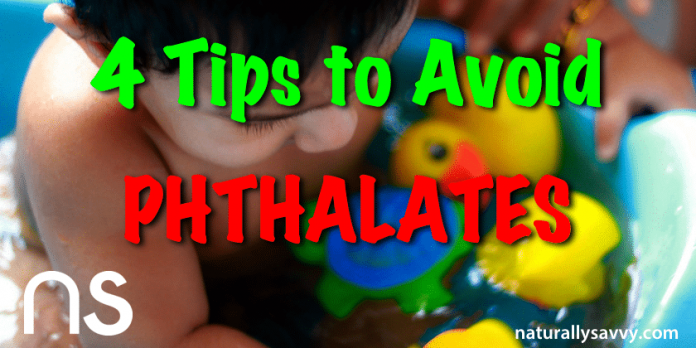
Green Living experts Ron and Lisa Beres joined Lisa Davis on Naturally Savvy Radio to discuss the dangers of phthalates. [The following transcript has been edited for print.]
Listen to the full radio interview here.
Lisa Davis: Back with us again are the fabulous Lisa and Ron Beres. They are the go-to Green folks that I adore. Today we’re going to talk about the truth about phthalates.
Lisa Beres: Today a lot of us are going to extreme lengths to protect our homes-putting in secure windows and alarms-but in fact the risk today isn’t necessarily a thief, but rather chemicals that we’re exposed to on a daily basis. Today we’re going to talk about phthalates which are a group of plasticizers that are used to make products (particularly PVC) more flexible. They make plastic resilient; they’re used in children’s toys and household goods-anything with PVC (shower curtains, vinyl flooring, wall coverings-even shampoo, nail polish, hair spray, lubricants and wood finishers). This class of chemicals is ubiquitous in our homes and in our lives.
I mentioned personal care products. Phthalates are used in those particular items to make the scent linger longer. If you’re going to look for them on a label, you’re going to need to be a bit of a detective because there are dozens of different types of phthalates, and I’m just going to list some of them for you real quick because we don’t have time to get into all of them: DBP, DINP, DEP, DEHP, DMP, BBP, DNOP…
Lisa Davis: A, B, C, D, E, F, G, H, I-sounds like the whole alphabet!
Lisa Beres: And if I pronounce them, you’d be like, “forget about it!” Why I’m telling you this is because when you look on the back of your personal care products you’re not necessarily going to see the word "phthalates". Dibutyl phthalate may be listed as DBP, etc. Also, the word "fragrance" is protected as a trade secret, so companies can hide hundreds of chemicals behind that word, and one of the chemicals they often hide behind that word is "phthalates". You want to make sure that you’re avoiding any product that has the word "phthalate", any of those acronyms that I mentioned, or the word fragrance. Why? Because there’s a lot of health risks associated with these chemicals.
Read more about why synthetic fragrance stinks
Ron Beres: The most common health risk of phthalates is endocrine disruption-basically they’re potent hormone disruptors. They’re linked to reproductive system issues, and in fact, researchers at the University Of Rochester School Of Medicine back in 2008 actually found that phthalate may have feminizing properties in humans. This is not surprising-there have been numerous studies and tests. For example, the EWG (Environmental Working Group) has a chemical index and they discovered that several phthalate compounds have caused reduced sperm counts and structural abnormalities in the reproductive systems of male test animals. Some studies have actually linked phthalates to liver cancer, and that’s according to the U.S. Center of Disease Control. The list goes on. The EPA considers phthalates a probable carcinogen, and exposure to phthalates can come in many forms, Lisa was giving some examples earlier. They’ve discovered that phthalates found in household dust are linked to rhinitis, eczema, and asthma in children.
Lisa Beres: The levels of phthalates in indoor air is much higher, of course, than outdoor air because so many products that we bring into our homes have them. We talked about vinyl flooring and PVC (and I just want to add that linoleum that is made from linseed and flax that doesn’t have PVC.) PVC flooring was found to have two types of phthalates: DBP and the DEHP which appear in higher quantities in indoor air. They’re found in human urine, they’re found in blood, and they’re found in breast milk, so this is a problem for mothers who are breastfeeding. These phthalates get passed to the baby and because they’re endocrine disrupting chemicals, the health effects are very scary.
Lisa Davis: It’s so scary.
Lisa Beres: It’s so scary. People don’t really realize how scary and how prevalent they are. National data collected by the CDC found that the highest levels are surprisingly in children ages six to eleven and in women, of course, because we’re using so many personal care products. Then African-Americans have higher levels of phthalates than Caucasian people do.
Read more about how to protect yourself from dangers in your personal care products
Ron Beres: Here are four tips to avoid phthalates-a recap of everything we've discussed:
#1: Chose healthier personal care items. We mentioned EWG a few times now. They have a database called Skin Deep that lists the ingredients in products and rates them. Check that out to identify healthier personal care items.
#2: Avoid plastic toys. Opt for wooden toys or organic cotton instead.
#3: Avoid PVC vinyl flooring and shower curtains. This is simple-you can look for flooring made of reclaimed wood, tile, concrete, cork and so forth. You can look at hemp shower curtains-they are very effective.
#4: Avoid toxic air fresheners. Phthalates are used in air fresheners and this is to maintain the lingering fragrance.
Lisa Beres: One other thing. Phthalates were also found in food packaging. They did a study and found that people who led a mainly vegetarian diet had significantly lower levels of phthalates in their urine. That’s pretty interesting to think about that. When you’re eating your fruits and veggies from the farm or you’re growing them, you’re going to be less exposed to these chemicals in food packaging, so that’s a really easy fix.
Listen to the full radio interview here.
If you would like to learn more from Green Living experts Ron and Lisa Beres, visit RonandLisa.com, or follow them on Twitter @RonandLisa.
Image via Radhika Kailayapillai










